
June 6th, 2013
Weird Comparison?
The short answer is “yes”.
Still, the question had been posed to me by one of my readers, and it caught my attention. On paper, this seems like a very odd duck comparison. One player, the Tamron SP 24-70mm f/2.8 VC USD, is a standard full frame zoom lens with a fast constant aperture. It is fairly big (4.3 inches/108.5mm long) and heavy (29.1 oz/825 grams). Uh, did I mention that it was a zoom?
The second player is one of the most unique full frame lenses Canon has ever made: a tiny little “pancake” prime lens. The Canon EF 40mm f/2.8 STM is less than an inch long (.9 inch/22.8mm) and weighs a whopping 4.6oz/130 grams. So, yeah, it is a fifth of the length and less than a sixth of the weight. Uh, did I mention that it was a prime?
The prices aren’t exactly equalizers, either. As of today the price at Amazon.com for the Tamron is $1299 USD, while the Canon is only $149.
So why exactly am I comparing these lenses? First, because I was asked to, but beyond that, what intrigued me is that both of these lenses are a bit of aberrations. The Tamron came onto the scene brashly a little over a year ago and challenged the OEM manufacturers by offering a lens that competed on merit more than price. It has great optics, high grade build quality, weathersealing, and a killer feature – a very effective Vibration Compensation system (Tamron speak for Image Stabilization). Interestingly, its list price was $1299 at introduction. At the time, that seemed like a fairly premium price for a 3rd party lens. That was, until Canon came out with the Mark II version of its own 24-70mm f/2.8 zoom (without image stabilization) at a staggering price of $2499 (it is currently on Amazon for $2099). All of a sudden the Tamron seemed a lot more reasonable, and is probably one of the main reasons that the Tamron is still selling strong a year later at its initial price point. This is good news for those of us who bought the lens early on, because it means that our investment has stayed sound.
The EF 40mm Pancake is perhaps even odder, because it is a newly designed full frame lens from Canon that actually seemed like a bargain! All of Canon’s newest lens released have carried a bit of sticker shock, but everyone conceded that this particular lens was a bargain from Day 1 at $199. Despite that, the lens was quickly discounted further and has been widely available for $149 for several months. It was instantly beloved because of its “cuteness” factor, extreme portability, and, most surprisingly, exceptional optics. It almost instantly replaced the “nifty fifty” (EF 50mm f/1.8 II) as the bargain lens of choice for amateurs and pros alike. It is not at all unusual to see this lens in the kits of many pros whose next cheapest lens retails for well over a thousand dollars. It makes a full frame DSLR like the 6D almost (not quite) pocketable. It is a no brainer to throw into a bag because it weighs next to nothing and takes up so little room. I don’t use it often, but love it nonetheless for this very reason.
As I said, the “shorty forty” has amazingly good optics and build quality for its size and price point. It’s optics are actually good, period. It is very sharp across the frame wide open and stepping down is more about depth of field than it is about sharpness. It is not overly “fast” for a prime, but it is sharper wide open than many primes stopped down a bit. It has circular aperture blades, unlike many older designed primes, so it retains nicely circular bokeh highlights even when stopped down. It also debuted a new focusing motor for Canon, the STM or Stepping Motor. It is a completely different system designed mostly for use in video production (smoother focus and quieter operation). It is reasonably fast, but not as fast as Canon’s better USM focus motors.
The primary object of this comparison is image quality. The question: can an excellent standard zoom like the Tamron compete optically with this new little marvel? The answer, is, well, complicated. First of all, if you want to compare in a controlled environment shooting test charts, Bryan Carnethan over at the Digital Picture has done a much better job than I could of making just such a comparison. The one disadvantage is that he did not shoot the Tamron at 40mm. Click here to check out his data.
The Conditions
Here are the conditions for this comparison. First, all of the images here are presented without any kind of adjustment/processing. I had each lens on a Canon 6D body set with identical settings. All shots were taken handheld (the most common way both of these lenses will be used). Tripods are great for optical image quality, but my intent was to establish usefulness in the field and to utilize the lenses in the way that they would most likely be used. That makes this comparison less scientific but perhaps more “real world” useful. I chose shots as I normally would, shooting one camera/lens combo right after the other. The conditions were a light rain, which allows for rich colors. It should be noted that this is one area that would typically tip me towards carrying the Tamron; it is weathersealed while the 40mm is obviously not. I did shoot these as RAW files which were each converted with identical settings. I did not use any kind of profile to correct aberrations, distortion, or vignetting. I wanted the pure image without enhancement. My camera style on both cameras was “Faithful”. I shot in manual mode with the shutter speed constant on both cameras, but had ISO on AUTO on both bodies, so metering will not show up in shutter speeds but in ISO settings. Aperture was manually set.
The shots here are a mix: most of the time I tried to shoot at identical focal length (40mm) and always at identical aperture. On a few occasions I shot the Tamron at 70mm to demonstrate the difference in background blur at the longer focal length.
Projections: the 40mm should win comparisons at 40mm for a few reasons 1) Fixed focal length (lens has been designed and tuned for just one focal length). 2) The 40mm has been calibrated for the body (AFMA) at that particular focal length, while the Tamron has been tuned at the wide (24mm) and tele (70mm) ends of the spectrum, meaning that 40mm is essentially a compromise between the two.
Enough of this: let’s look at some pictures! (All sequences Tamron first, Canon second)
The Gallery
Confused? At this size it is almost impossible to tell a difference in image quality. We will take a look at some 100% crops in a moment, but here are the observations from the field in comparison.
- The Tamron renders colors slightly more warm than the Canon. This is not at all unusual and has been my experience with almost all comparisons between Tamron lenses and their Canon equivalents. This is a “taste” thing. My eye prefers the warmer Tamron colors; others prefer the slightly cooler tones of the Canon.
- Both lenses have an impressive amount of sharpness at any kind of typical level of viewing.
- Both lenses metered very consistently considering the uncontrolled conditions. If either lens was “favored” by needing marginally less ISO, it was the Canon. I would conclude that is [very] marginally brighter than the Tamron.
- Vignetting is noticeably heavier on the Canon at wide open aperture.
- AF focus speed is definitely faster on the Tamron, particularly when making significant changes. AF is also much quieter on the Tamron, although the Canon is both faster and quieter than the terrible focusing motor in cheap lenses like the EF 50mm f/1.8II or the 35mm f/2
- Both lenses have very usable minimum focusing distances: 40mm Minimum focus 11.8”/300mm and Tamron Minimum Focus 15” 380mm. While the Canon’s minimum focus distance is a little closer, the Tamron actually has a higher magnification (.18x vs. .20x) due to the longer focal length. More importantly, both of them resolve very nicely at minimum focus and are thus excellent candidates for extension tubes. The Tamron’s advantage here is the the longer focal length produces significantly more blur of the out of focus elements. See the comparison here:


You can clear see the softer, more diffused background that comes from the long focal length. Both lenses produce excellent detail at close focus distances. But let’s take a look at some crops to get the details.
100% Crops
First, we will examine image sharpness. We will be taking a look at three crops from this image (Tamron first) – click any of the crops for a closer look:




Now for the Canon. Here is the original photo:



These crops should demonstrate what I observed in using the lenses and then looking at them at a pixel level – the Canon consistently has a small edge in sharpness, particularly towards the edges. This image also illustrates the difference in the field is pretty marginal. One final observation is that while chromatic aberrations are very well controlled in the little 40 (particularly for a Canon prime), the Tamron has a slight edge in that area (check both of the top right images in the larger size to see what I mean). Overall sharpness is a win for the Canon.
100% Crops – Bokeh
The little Canon definitely has much smoother bokeh than either the 50mm f/1.8II and the 35mm f/2, but I have been very impressed by the Tamron’s smooth bokeh. Let’s take a look:
This gallery contains both the original image and 100% bokeh crops.
Both lenses produce nice, soft bokeh, but to my eye the Tamron retains more circular highlights, particular towards the edge of the image. Some of the Canon edges are further disadvantaged by the heavy vignetting. The Tamron’s extra focal length at 70mm is a definite advantage as it allows out of focus areas to become softer. A slight advantage to the Tamron here.
Conclusions
Both of these lenses produces stunning images. The comparison is still an odd one, of course, and the conclusions are a little murky. Let’s take a look at the scorecard:
-
Image Sharpness – Canon
-
Vignetting – Tamron
-
Bokeh – Tamron
-
Size/Portability – Canon
-
Weathersealing – Tamron
-
Close Focus – Tamron
-
Price – Canon
It’s a mixed bag, here. The Tamron is clearly the more flexible tool, despite the slight advantage in image quality by the prime, but at a significant price premium. Of course, if you are fortunate, like me, you can own both of these lenses and use them for different purposes. I wouldn’t hesitate to recommend either of these lenses – they are both stunning examples of what an “upstart” can do. Here’s hoping that the future contains more nice surprises like them!

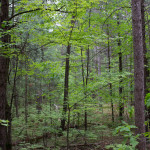

















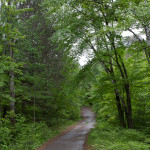












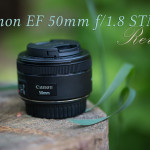
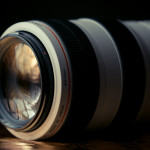
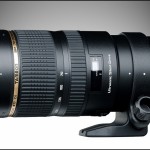
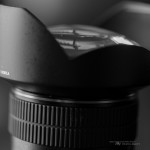
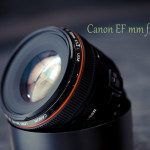

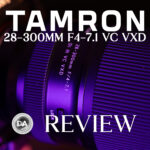

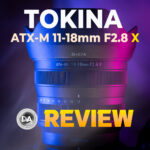

Thank you for taking the time to do this comparison, Dustin. It is helpful in a number of ways, even to those of us — a minority, it seems — who don’t care for the set of compromises associated with the popular f.2.8 wide-midrange zooms (consideration of costs aside!).
I’d note that on a Canon APS-C body (such as my own M3), the EF 40mm f.2.8 STM paired with the notably flexible and [easily obtained second hand] EF-S 24mm f.2.8 STM ‘pancake’ lens — fine review here! — makes for a very sensible “wide-normal”/”long-normal” complement. This sort of thing is the approach I personally favor over the ubiquitous “~50mm F.O.V. equivalent” in APS-C. Since first taking up with SLRs many decades past, I quickly found the typically 52mm F.O.V. to consistently feel either too ‘tight’ in framing, or not ‘wide enough’… and not so often, ‘just right’. This has been a common enough judgement among small format photographers for decades, though it’s not the “majority” opinion, it seems. I typically left my 50mm f.1.4 AI Nikkor home when heading out in daylight, preferring the 35mm f.2.0 AI-S as my main all-arounder (see EF-M 22mm f.2.0 STM).
Nowhere else is there such an optically capable, lightweight & super compact, thoroughly affordable and practical option for a wide range of photographers at different skill levels as Canon’s pancake pair. Money well spent, in my view. The wide availability of Canon’s economical, featherweight, but admirably performing EF-S 10-18mm ultrawide zoom just cements the case for budget minded shooters or advanced practitioners alike who need a compact alternative — super light weight and compact is good! The two roughly comparable EF-M STM alternatives here (22mm and 11-22mm), plus the 40mm STM adapted, accomplish much the same thing for EOS-M users such as myself. I just have ’em all, since although I’m not a Canon DSLR user [“Pentaxian”], the 10-18mm, for example, remains a keeper for its 15mm equivalent F.O.V. at just over eight ounces (!) on my 1.5x crop factor Sony A5000. The two bodies together (both obtainable at very low auction prices, indeed, if you’re willing to take that route with its risk for hassles) give me a very economical “best of both worlds” lightweight mirrorless pairing in view of the fact that I don’t personally require fast AF from this pair. I leave that to a DSLR. Two bodies, however arranged, also obviates any real need for a compromized “walkaround” zoom or “kit” lens* for many. Just employ a little forethought, and you’re prepared. Your mileage may vary, as they say.
* The apparently ‘next generation’ fast autofocus on Canon’s latest kit zoom offering might swing the weight of opinion in the direction of accepting that particular set of compromises for some budget conscious users. See Dustin’s nice preview write-up here!